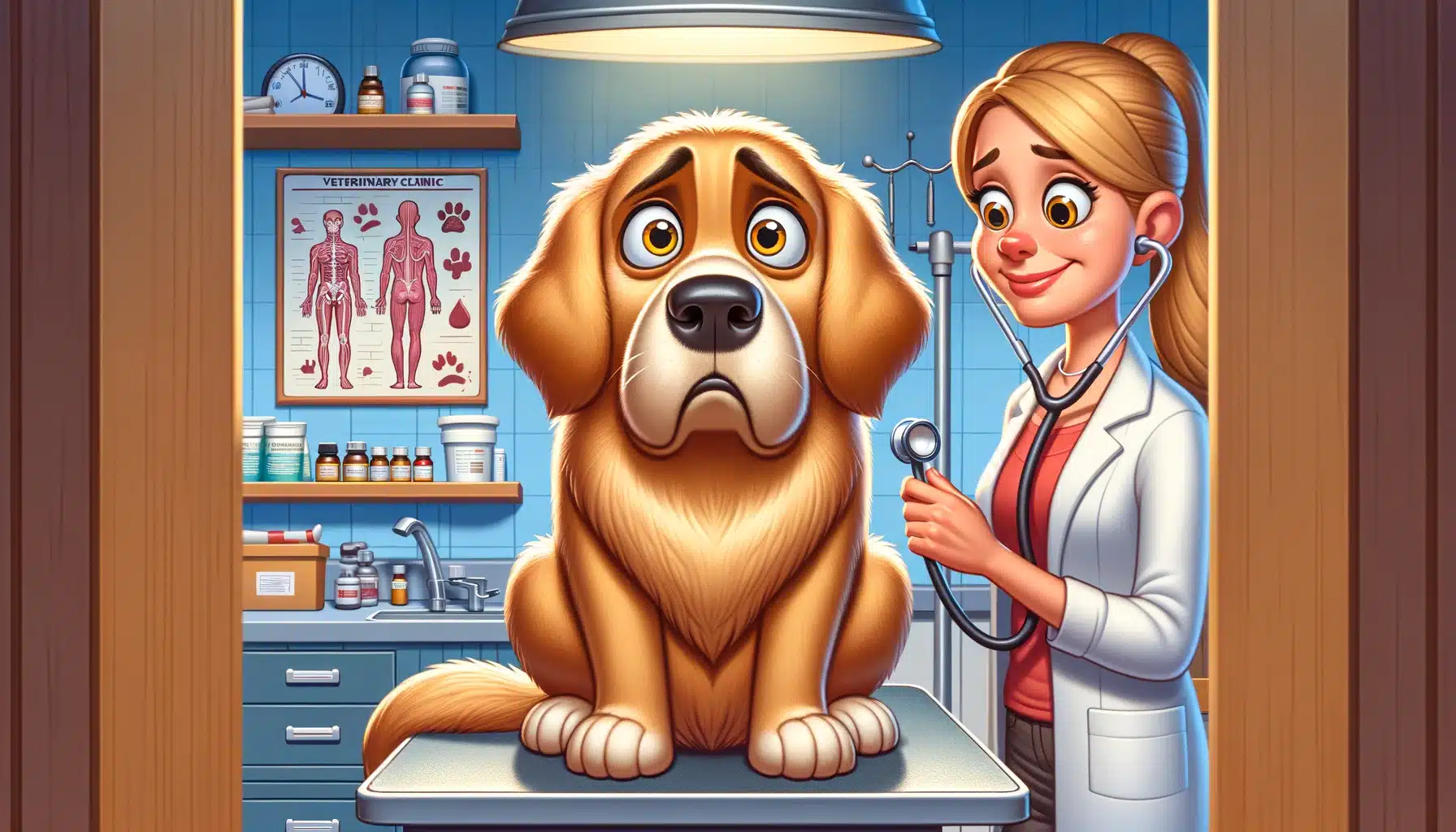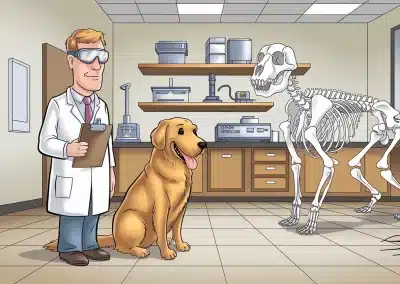Unusual Illness Killing Dogs. Veterinarians across the United States are alerting dog owners about an unusual illness that is responsible for a rising number of canine fatalities. The illness, primarily presenting as a respiratory condition, has been reported in multiple states and does not appear to match the common viruses already known to affect dogs, such as the canine influenza or Bordetella, commonly associated with kennel cough.

Symptoms of this mysterious ailment include coughing, sneezing, eye or nose discharge, and lethargy. Infected animals exhibit signs that are not typical of other well-characterized respiratory diseases in dogs. Despite extensive testing, the exact cause remains unidentified, and it has not been linked to any pathogens veterinarians typically screen for in respiratory cases. Concerns are growing as the mystery dog illness spreads, and experts are working diligently to understand the mode of transmission, the potential source, and any possible treatment or prevention measures.
This situation has not only puzzled the veterinary community but also raised alarm among dog owners whose pets may be at risk. Veterinary diagnostic labs in affected areas are collaborating to track cases and share findings in an effort to gain control over the spread. Reports have highlighted instances from Oregon to Florida, indicating a widespread issue that requires attention and effort from both dog owners and professionals in the veterinary field. Owners are advised to monitor their pets closely for symptoms and to seek veterinary care if their dog exhibits signs of respiratory distress.
Overview of the Illness
A contagious and possibly fatal respiratory illness is affecting dogs across multiple states, alarming veterinarians and pet owners.
Characterization of the Disease
The disease presents as a severe respiratory illness in dogs, which in some cases, rapidly progresses to acute pneumonia. It is suspected that the causative agent could be a virus, but concrete identification remains elusive. This illness, often described as a mysterious disease, mimics symptoms of known pathogens like canine influenza, but its specific nature and origins are not yet fully understood.
Symptoms Observed
Infected dogs exhibit a range of symptoms including persistent cough, nasal and eye discharge, lethargy, and sneezing. In severe cases, the illness can escalate to pneumonia, which has been fatal in several instances. Veterinary reports have noted the rapid onset and aggressive progression of symptoms, distinguishing this from more common respiratory afflictions.
Transmission and Contagion
The illness is highly contagious, primarily spreading through close contact between dogs in dense social environments such as boarding kennels, groomers, or dog parks. The disease seems to spread via virus shedding from infected individuals. The multi-state spread implies a facile transmission that poses risks to dog populations in various environments, with some states reporting high incidents of the disease.
Geographic Spread
The mysterious illness impacting dogs has been documented across various states within the United States. As the reports of this unknown disease continue to surface, the focus shifts to understanding the geographical extent and scrutinizing its spread.
States Affected
The illness that has emerged in the canine population has been reported across Oregon, Colorado, New Hampshire, Washington, Indiana, Illinois, Idaho, and California. The Pacific Northwest, particularly the Willamette Valley in Oregon, has experienced a notable concentration of cases. Authorities like the Oregon Department of Agriculture have been actively compiling reports in an effort to understand the breadth of the disease’s impact.
- Northeast Regions:
- New Hampshire: Confirmed cases by the New Hampshire Veterinary Diagnostic Laboratory.
- Massachusetts and Rhode Island: Monitoring for potential reports.
- Midwest & West:
- Indiana and Illinois: Elevated reports prompting local investigations.
- Colorado and Idaho: Cases of the illness leading to inter-state veterinary communication.
Tracking the Outbreak
Teams from the Oregon Veterinary Diagnostic Laboratory and Oregon State University are in collaboration with the U.S. Department of Agriculture’s National Veterinary Services Laboratory to closely monitor and track the progress of the disease. Additionally, research initiatives by the Hubbard Center for Genome Research at the University of New Hampshire are underway to investigate the genetic aspects of the disease across multiple states. These efforts aim to identify patterns, causes, and potential solutions to halt the spread of the illness.
It’s vital that veterinarians nationwide report new instances of this illness to state and national health departments to ensure a coordinated response.
Impact on the Canine Community
The recent spread of a mysterious illness has had a significant impact on dogs across several states, triggering responses from veterinary services and affecting mortality rates within the canine community.
Affected Dog Populations
Dog owners in multiple states are on high alert as the illness affects a wide range of dog populations, including those in animal shelters and boarding kennels. Reports suggest an uptick in respiratory disease symptoms, particularly in places where dogs are in close quarters, potentially facilitating the rapid spread of the disease.
Response from Veterinary Services
Veterinary services, including local vets, state veterinarians, and veterinary laboratories, are actively monitoring the situation. The American Veterinary Medical Association is involved in disseminating information to veterinarians who are seeing an increase in similar cases. Diagnostic efforts and the search for effective treatments are ongoing, as antibiotics are not proving effective against this illness.
Outcomes and Mortality
The outcomes for affected dogs vary, but there have been numerous instances of poor outcomes, including a significant number of deaths. Some dogs with severe symptoms have been euthanized to prevent suffering. Pet owners are advised to watch for symptoms such as coughing and nasal discharge and to seek immediate veterinary care to potentially reduce the chances of fatal outcomes.
Medical and Scientific Response
https://www.youtube.com/watch?v=mfCzWZTC0wY&embed=true
In response to the widespread of a mysterious respiratory illness in dogs, the veterinary and scientific communities are mobilizing to understand and manage the situation. Their efforts are concentrated around intensive research and strategic use of antibiotics, with a central role for vaccinations where applicable.
Research and Investigations
David Needle, a senior veterinary pathologist, along with his team, is coordinating a series of rigorous investigations across multiple states. The focus is on pinpointing the underlying cause of the illness, which displays symptoms commonly mistaken for kennel cough but is notable for its severity and duration.
Labs nationwide, staffed by virologists and pathologists, are analyzing samples from affected canines. They aim to identify whether a novel pathogen is responsible or if a known virus has mutated. Research efforts include:
- Genetic sequencing of viral samples
- Examination of bacterial cultures for uncommon strains
Cooperation among labs is key, with data continuously shared and compared. As part of the treatment protocol considerations, antibiotics are being used cautiously to avoid resistance, and only when a bacterial infection is confirmed alongside the respiratory illness.
The question around vaccines has become pertinent. There’s a push for determining if current vaccinations offer any cross-protection against this illness. Furthermore, the possibility of developing a new vaccine is on the agenda should the responsible agent be identified and characterized.
Veterinarians caution that dogs showing respiratory symptoms should be vaccinated against common canine diseases, as per established guidelines, to rule out those conditions. In this multifaceted response, the goal of these professionals is not only to treat the symptomatic dogs but also to prevent the spread and protect the canine population at large.
Public Health Advisories
In response to the unusual illness impacting canines, public health advisories focus on critical preventative measures and educational efforts for dog owners. These advisories aim to mitigate the spread of the disease and empower pet owners with the knowledge needed to protect their pets.
Preventative Measures
Avoid Dog-to-Dog Contact: Health officials recommend that dog owners decrease contact with other dogs, especially in areas where the illness has been reported. Crowded environments such as dog parks and kennel facilities can facilitate rapid transmission.
- Basic Precautions: Just like with human illnesses such as COVID-19, basic sanitary precautions are crucial. Regular handwashing after contact with pets and disinfection of pet-related items can hinder cross-contamination.
- Vaccinations: Pet owners are encouraged to consult with their veterinarians about appropriate vaccination schedules. While this mysterious illness may not be directly related to known pathogens like bordetella, commonly associated with kennel cough, maintaining general vaccination updates can protect against various respiratory diseases.
Educational Efforts for Pet Owners
Informational Outreach: The American Veterinary Medical Association, along with the San Diego Humane Society and the Robert Wood Johnson Foundation, is distributing information on recognizing symptoms of tracheobronchitis and other respiratory infections in dogs.
- Symptom Awareness: Pet owners should be vigilant for signs of respiratory distress in their pets and seek veterinary care if symptoms arise.
- Necropsy Studies: By participating in studies and reporting unusual cases, pet owners can contribute to the collective effort to understand the illness. Necropsy (animal autopsy) findings are vital for researchers to investigate the cause and develop effective interventions.
The goal of these advisories is to ensure that dog owners have the resources and knowledge necessary to protect their pets during this outbreak.
Looking Forward

As the community grapples with the spread of the mystery dog illness, the focus is increasingly on advancements in veterinary health and developing long-term strategies for disease management. These efforts aim to safeguard the well-being of canines nationwide and to provide veterinarians with the tools they need to effectively combat and manage this health crisis.
Advancements in Veterinary Health
Researchers and veterinarians are invested in identifying the causative agents behind cases of lasting respiratory disease in dogs which have been observed across several states. Key pathogens like strep zoo and mycoplasma are under scrutiny. Efforts are underway to enhance diagnostic methods, allowing for quicker identification and response to the illness. The development of specialized tests could lead to earlier detection and improved outcomes.
Long-Term Strategies for Disease Management
To prevent the spread of this condition, long-term strategies are essential. Veterinarians are advocating for:
- Vaccination protocols: Where vaccines are available, they can play a pivotal role in preventing outbreaks of known pathogens.
- Public awareness campaigns: Educating pet owners on symptoms and prevention measures to reduce transmission rates.
- Enhanced surveillance systems: Monitoring and reporting of cases to track the spread and effectiveness of interventions.
These strategies combine both immediate responses and preventive measures, ensuring a multi-faceted approach to disease management. By doing so, the veterinary community aims to minimize the impact of the current mystery illness and better prepare for future health challenges in the canine population.









